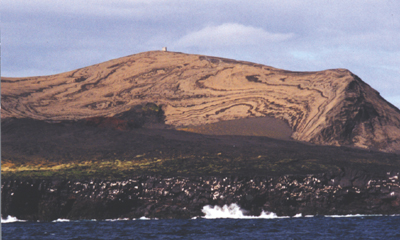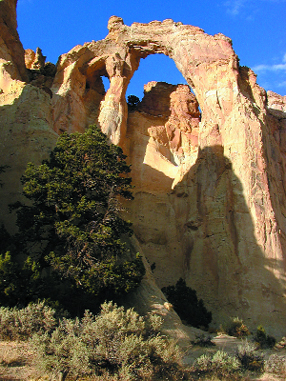Every month, we'd like to feature one of your photos from anywhere in the world and invite other readers to guess where it was taken. Look every month in the print Geotimes for a new photo. Following are clues, answers and winners from past issues.


| Do you have slides and photos you've
collected from field work or vacations? Every month, we'd like to feature one of your photos from anywhere in the world and invite other readers to guess where it was taken. Look every month in the print Geotimes for a new photo. Following are clues, answers and winners from past issues. |
 |
| Send answers for the November 2003 Where on Earth?
contest, which appears in the print magazine, to Geotimes by November
24 (or postmarked by this date). From those answers, Geotimes staff
will draw the names of 10 people who will win Where on Earth? T-shirts.
And from those 10 names, we will draw the names of two people who will win
a Brunton compass.
Click here
to submit a guess for this month's Where on Earth?
contest. Submit
photos for Where on Earth? |

|
Clues: 1. Born in a burst of explosive fury in 1963, this oceanic volcano continued to erupt until 1967. After it had built a tephra cone up from the ocean floor, its eruptions became less violent, and basaltic flows poured out onto its flanks. 2. The island is a sanctuary off-limits to casual visitors, to enable scientists to observe and record its pristine ecologic development. Green plants and abundant seabirds have established colonies above its shores. 3. The island is named after a Norse god of fire. Scroll down for the answer
|
|
Answer: Surtsey volcano, about 35 kilometers southwest of Iceland in the North Atlantic Ocean. Photo and clues provided by Wallace Hansen of Lakewood, Colo. |
Check back later this month to find out who won September's Where on Earth? contest.

|
Clues:
1. The rock in the cliff was once a Jurassic sand sea. 2. This feature is named for a man who was president of what is today the largest nonprofit scientific and educational institution in the world. He was also editor of their yellow-fringed magazine. 3. The national government set aside the site in 1996 despite strong opposition from most local politicians.
Scroll down for the answer
|
|
Answer: Grosvenor Arch, formed from Navajo sandstone, is a prominent feature of the Grand Staircase-Escalante National Monument in Utah. Photo supplied by Thomas McGuire. |
September Winners
1. Jason Bateman (New Paltz, N.Y.)
2. Lynne Beatty (Shawnee Mission, Kan.)
3. William Bilodeau (Thousand Oaks, Calif.)
4. Wallace R. Hansen (Lakewood, Colo.)
5. Jeff Kirtland (Seattle, Wash.)
6. Christine Reed (Ballston Spa, N.Y.)
7. David Sitzler (Rio Rancho, N.M.)
8. William L. Smith (McLean, Va.)
9. Paula Stine (Decatur, Ill.)
10. John Williams (Sacramento, Calif.)
 |
Geotimes Home | AGI Home | Information Services | Geoscience Education | Public Policy | Programs | Publications | Careers |